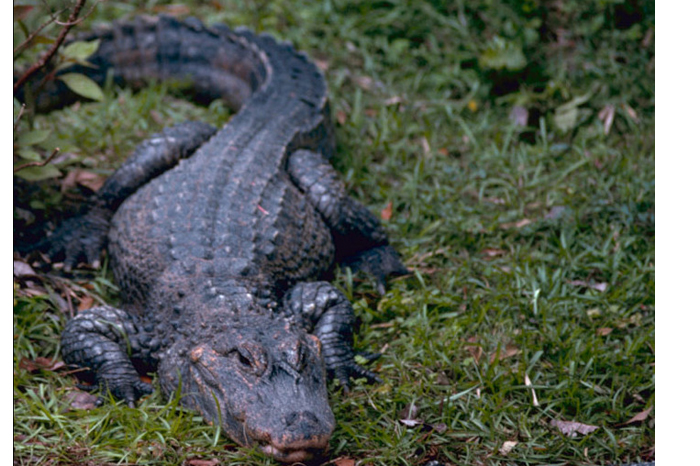Facts about alligators
Only two species of these sneaky predators still cruise the rivers, lakes and swamps of the world.
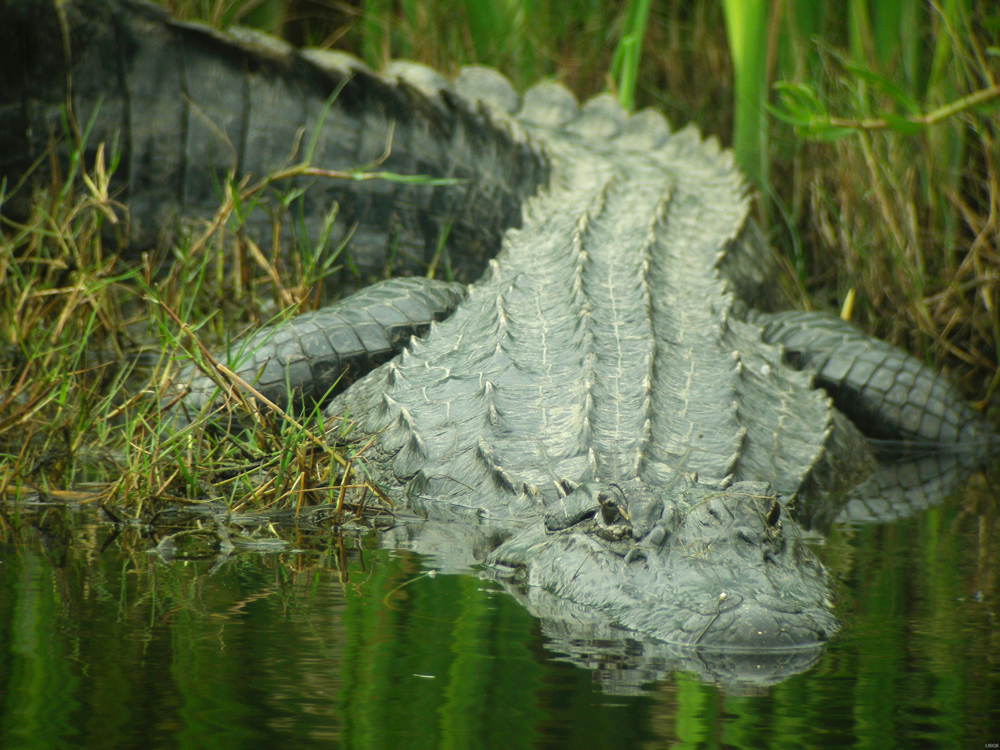
Alligators are large reptiles and members of the order Crocodylia. The two existing species of alligators and the many worldwide species of crocodiles are closely related, and people often confuse one with the other.
An alligator is distinguished by its wide, rounded snout and black color. When an alligator rests with its jaws closed, only its upper teeth are visible. Crocodiles, on the other hand, have narrow, pointed snouts, a grey-green color and both upper and lower teeth visible when the animal's mouth is closed, according to the Florida Fish and Wildlife Conservation Commission (FWC).
Crocodiles and alligators rarely overlap in range, so another way to tell them apart is to know where you are. American alligators, which live across the southern U.S., only overlap with American crocodiles at the southern tip of Florida, according to National Geographic. Chinese alligators are the only crocodilian anywhere near their range.
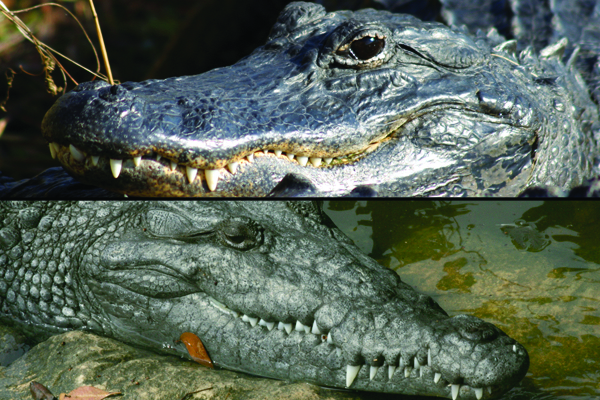
How big do alligators get?
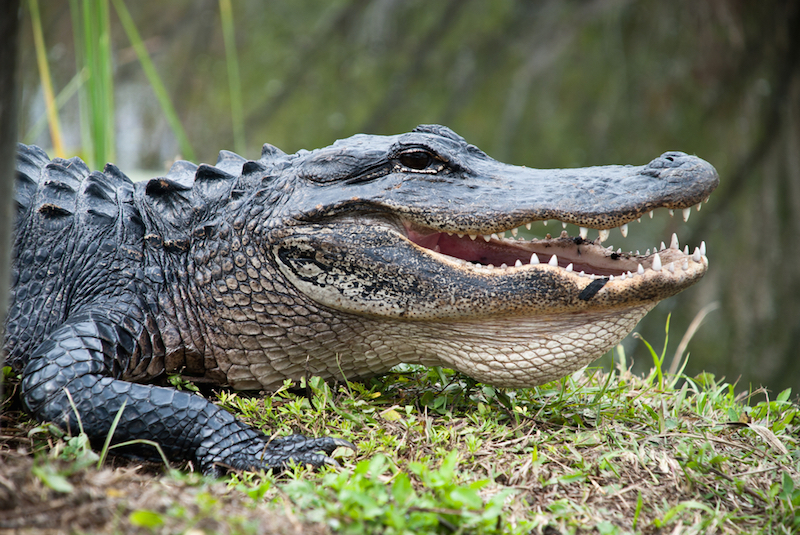
The American alligator can grow up to 11.2 feet (3.4 meters) long and weigh nearly half a ton (1,000 lbs. or 454 kilograms), according to the Smithsonian National Zoological Park. Chinese alligators are smaller, growing to around 4.6 to 4.9 feet (1.4 to 1.5 m) long and usually weighing only around 50 lbs. (22.7 kg).
Related: New bone-eating life form discovered in bizarre alligator corpse study
Where do alligators live?

The American alligator lives in the southern United States from eastern Texas and Oklahoma to North Carolina, and are well known throughout Florida, according to the Smithsonian Zoo. These gators can be found in slow-moving rivers, ponds, lakes and swamps.
Chinese alligators live in eastern China, and are confined to a small area in the Yangtze River basin near the Pacific Ocean, according to the Saint Louis Zoo. They are traditionally found in rivers, lakes, ponds and swamps, but are now confined mostly to ditches and ponds on agricultural land. Much of their habitat has been converted to rice paddies.
Get the world’s most fascinating discoveries delivered straight to your inbox.
What do alligators do?
Alligators are social creatures and often gather in groups called congregations. These groups are typically seen basking in the sun or taking a swim.
Alligators regulate their temperature externally. Like most reptiles, they are ectothermic or cold-blooded. That means that they are unable to control their temperature internally. On sunny days, they can use the edges of bodies of water to warm up, or enter the water to cool down. When it gets too cold, American alligators have also been known to spend more time in the water, which holds some warmth longer than the outside air.
In some cases, if the water freezes over, they may "snorkel," keeping their noses sticking out above a frozen sheet of ice.
Related: Alligators in Oklahoma turn into 'popsicles' sticking out of the frozen water
Alligators also use water to hunt. On land they may look awkward, but in the water they can swim very quickly using their tails. This makes it easier for them to catch prey. American alligators can swim up to 20 mph (32.18 km/h) and run on land as fast as 11 mph (17.7 km/h), according to the San Diego Zoo.
What do alligators eat?
Alligators aren't picky about what they eat. They are carnivores, so any type of prey is a meal to these reptiles. Alligators may eat fish, mollusks, birds, small mammals and other reptiles. Though carnivores usually only eat meat, alligators will also munch on fruit.
Related: See an alligator devour another alligator in these gruesome pictures
How do alligators reproduce?
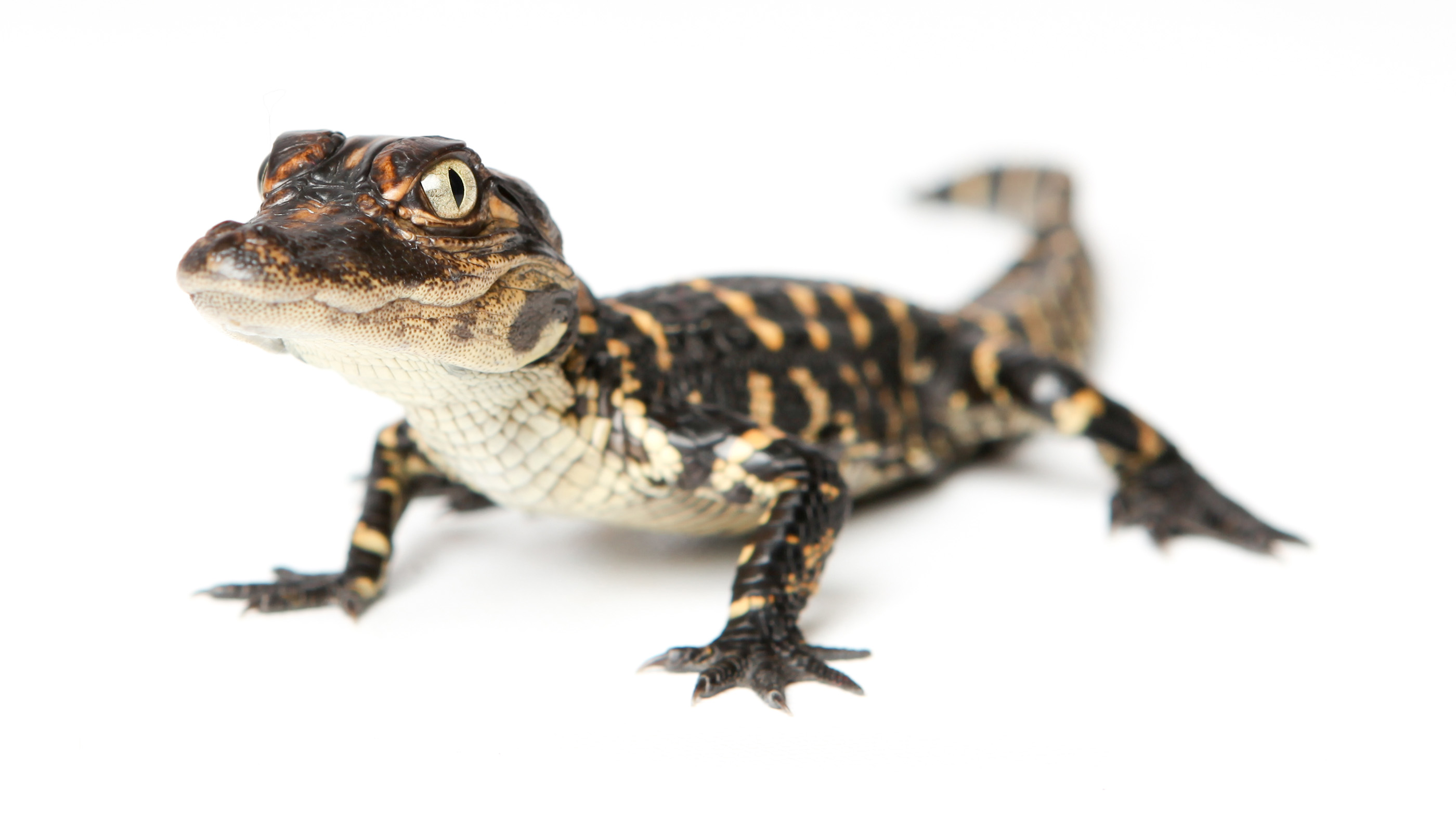
Alligators mate in June. Males may fertilize several females in one mating season, , according to the University of Michigan Museum of Zoology. Females are known to have only one mate each season.
Female alligators are protective, caring mothers. In July, the female alligator creates a nest from mud, plants and sticks in which she lays her eggs. The Chinese alligator can lay 10 to 50 eggs at a time, according to the Detroit Zoo. The American alligator lays a similar number. After the hard-shelled eggs are laid, the mother alligator will cover them with more mud, sticks and plants.
The temperature of the alligator's nest determines what sex the offspring will be, according to the University of Michigan Museum of Zoology. Females are born when the nest temperatures are below 82.4 degrees Fahrenheit (28 degrees Celsius), and males are born from temperatures above 91.4 F (33 C). A temperature of 87.8 F (31 C) will produce an even number of males and females.
As the eggs incubate in the nest, the female watches over them. In September, when the babies are ready to hatch, she helps them by removing debris covering the nest. She may also help the babies by breaking the shells with her mouth.
As soon as they are born, the babies, called hatchlings, can catch their own food. Chinese hatchlings weigh only around 1.05 ounces (30 grams) and are around 8.3 inches (21 centimeters) long, according to the University of Michigan Museum of Zoology. American hatchlings are around 6 to 8 inches (15 to 20 cm) long.
After around two years, they leave their mother's protection.
What is an alligator's taxonomy?
The taxonomy of alligators, according to the Integrated Taxonomic Information System (ITIS), is:
- Kingdom: Animalia
- Subkingdom: Bilateria
- Infrakingdom: Deuterostomia
- Phylum: Chordata
- Subphylum: Vertebrata
- Infraphylum: Gnathostomata
- Superclass: Tetrapoda
- Class: Reptilia
- Order: Crocodilia
- Family: Alligatoridae
- Genus: Alligator
- Species: Alligator mississippiensis (American alligator, Florida alligator, Mississippi alligator, Louisiana alligator), Alligator sinensis (Chinese alligator)
Are alligators endangered?
The Chinese alligator is "critically endangered," according to the International Union for Conservation of Nature's Red List of Threatened Species. This category lists species at the highest risk for extinction. There are fewer than 130 Chinese alligators in the wild, according to the Saint Louis Zoo. Breeding programs in wildlife refuges and zoos have been successful, however.
The American alligator population is listed as a lower risk and "least concern."
Cool facts about alligators
The word "alligator" comes from the Spanish word "el lagarto," which means "the lizard."
Though many people are afraid of alligators, these animals keep to themselves and usually don't attack humans unless they are threatened.
The alligator's rough skin makes it look like a floating log, which is helpful when stalking prey.
Additional resources
- Smithsonian National Zoo: American Alligator
- Tennessee Aquarium: American Alligator
- U.S. Fish & Wildlife Service: American Alligator (pdf)
- National Geographic: American Alligator
This article was updated to correct broken links and to clarify the arrangement of an alligator's teeth by Live Science Reference Editor Vicky Stein on April 27, 2021.

